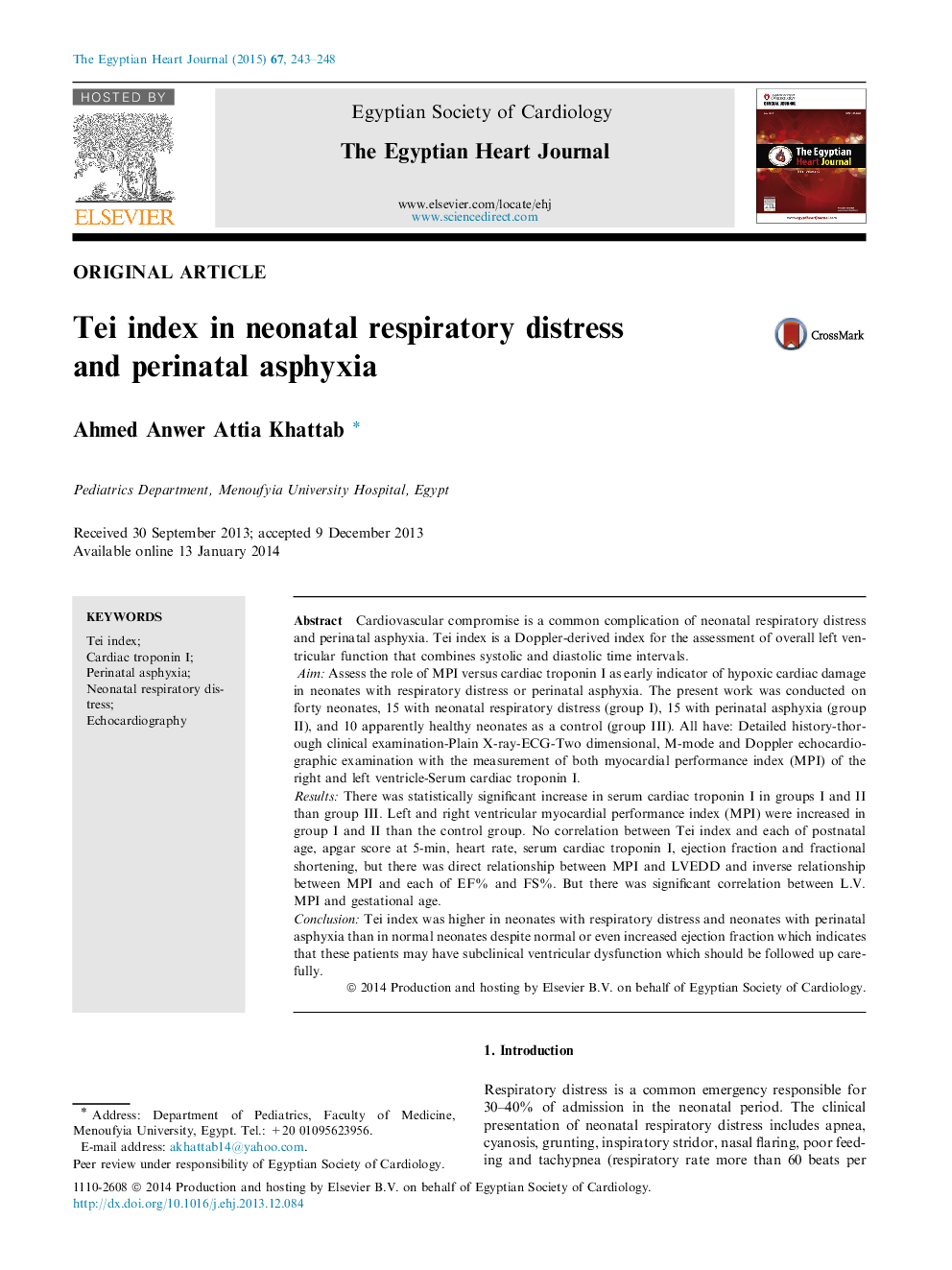| کد مقاله | کد نشریه | سال انتشار | مقاله انگلیسی | نسخه تمام متن |
|---|---|---|---|---|
| 2910580 | 1175017 | 2015 | 6 صفحه PDF | دانلود رایگان |

Cardiovascular compromise is a common complication of neonatal respiratory distress and perinatal asphyxia. Tei index is a Doppler-derived index for the assessment of overall left ventricular function that combines systolic and diastolic time intervals. Aim: Assess the role of MPI versus cardiac troponin I as early indicator of hypoxic cardiac damage in neonates with respiratory distress or perinatal asphyxia. The present work was conducted on forty neonates, 15 with neonatal respiratory distress (group I), 15 with perinatal asphyxia (group II), and 10 apparently healthy neonates as a control (group III). All have: Detailed history-thorough clinical examination-Plain X-ray-ECG-Two dimensional, M-mode and Doppler echocardiographic examination with the measurement of both myocardial performance index (MPI) of the right and left ventricle-Serum cardiac troponin I. Results: There was statistically significant increase in serum cardiac troponin I in groups I and II than group III. Left and right ventricular myocardial performance index (MPI) were increased in group I and II than the control group. No correlation between Tei index and each of postnatal age, apgar score at 5-min, heart rate, serum cardiac troponin I, ejection fraction and fractional shortening, but there was direct relationship between MPI and LVEDD and inverse relationship between MPI and each of EF% and FS%. But there was significant correlation between L.V. MPI and gestational age. Conclusion: Tei index was higher in neonates with respiratory distress and neonates with perinatal asphyxia than in normal neonates despite normal or even increased ejection fraction which indicates that these patients may have subclinical ventricular dysfunction which should be followed up carefully.
Journal: The Egyptian Heart Journal - Volume 67, Issue 3, September 2015, Pages 243–248